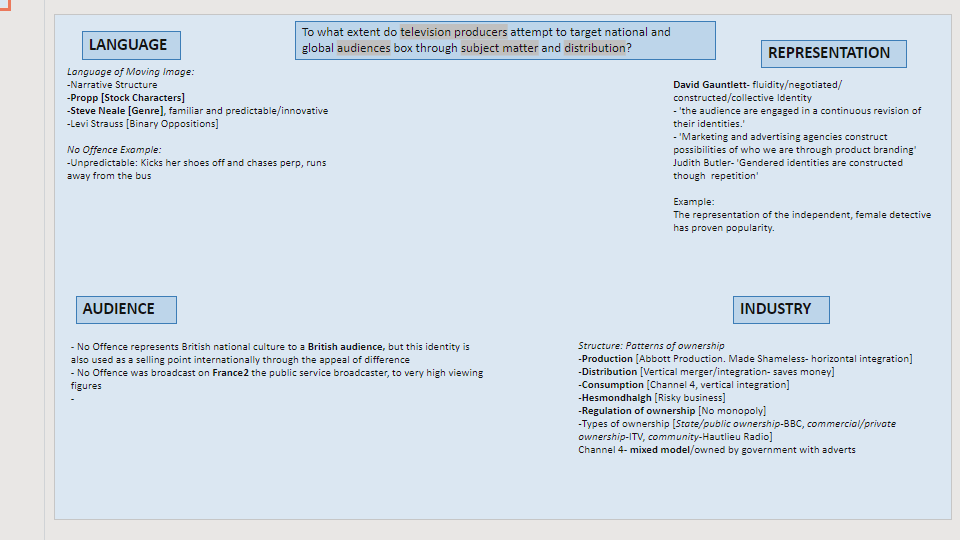What is the difference between the culture industries and other industries? [Hesmondhalgh]
Culture industries such as tarmacking the road is an essential thing. It is a necessity in life, however, in the other industries such as media, its purely for entertainment purposes.
Other industries is limited on what you are able to do (same sausage rolls/tarmacking) whereas culture industries are versatile, you can do many things with it to entertain/satisfy the intended audience.
Media industries are a risky business (Hesmondhalgh), you don’t know how people will react, but the other industries (greggs) if you sell a specific unit one day, you can predict what you will sell the next day based of previous data.
Both industries are very profitable/focus on money to survive.
‘Pivotal for the way we make sense of the world’- Golding and Murdock.
Industries
Transnational Media– Media that is accessible to multiple nations, not just one. EG- Netflix/Amazon Prime etc
Commercial Media- Privately owned, audiences don’t pay (adverts). EG- ITV
Structure: Patterns of ownership
NO OFFENCE
- Production: (Abbott Production/Abbott Vision. Same company that made Shameless. Is a horizontal integration
- Distribution (Vertical merger/integration- saves money)
- Consumption (Channel 4, vertical integration)
- Regulation of Ownership (Don’t allow monopolies)
Types of ownership [State/public ownership-BBC, commercial/private ownership-ITV, community-Hautlieu Radio]
Channel 4- mixed model/owned by government with adverts
Hesmondhalgh
‘Media is a risky business’
Public Service Broadcasting
What is it?
- A broadcasting/media outlet (BBC, Channel 4) that has a main purpose of public service. This is usually funded by the government. It allows diversity in the media, and allows people to understand more things in their nation to an extent. It benefits the public.
- Inform, educate, entertain.
BBC:
- An ‘arms length’ away from government
- It is critical of the government
Horizontal Integration = When a conglomerate acquires media companies of the same media type.
Vertical Integration = Ownerships that allow a media company to produce and distribute products.
Key Theorists:
- Curran and Seaton- ‘Ownership of media industries’
- Hesmondhalgh- ‘Media is a risky business’
- Livingstone and Lunt- ‘Regulation’
Curran and Seaton:
- ‘The media is controlled by a small number of companies that make products to create profit’
- ‘The business function of the media industry takes precedence over its creative/public service capacities’
- ‘PSB provides impartial news, serves minority audiences and champions national unity by offering inclusive rather than exclusive content.’
Media Ownership
Characteristics of the public sphere
Benefits
Livingstone and Lunt:

